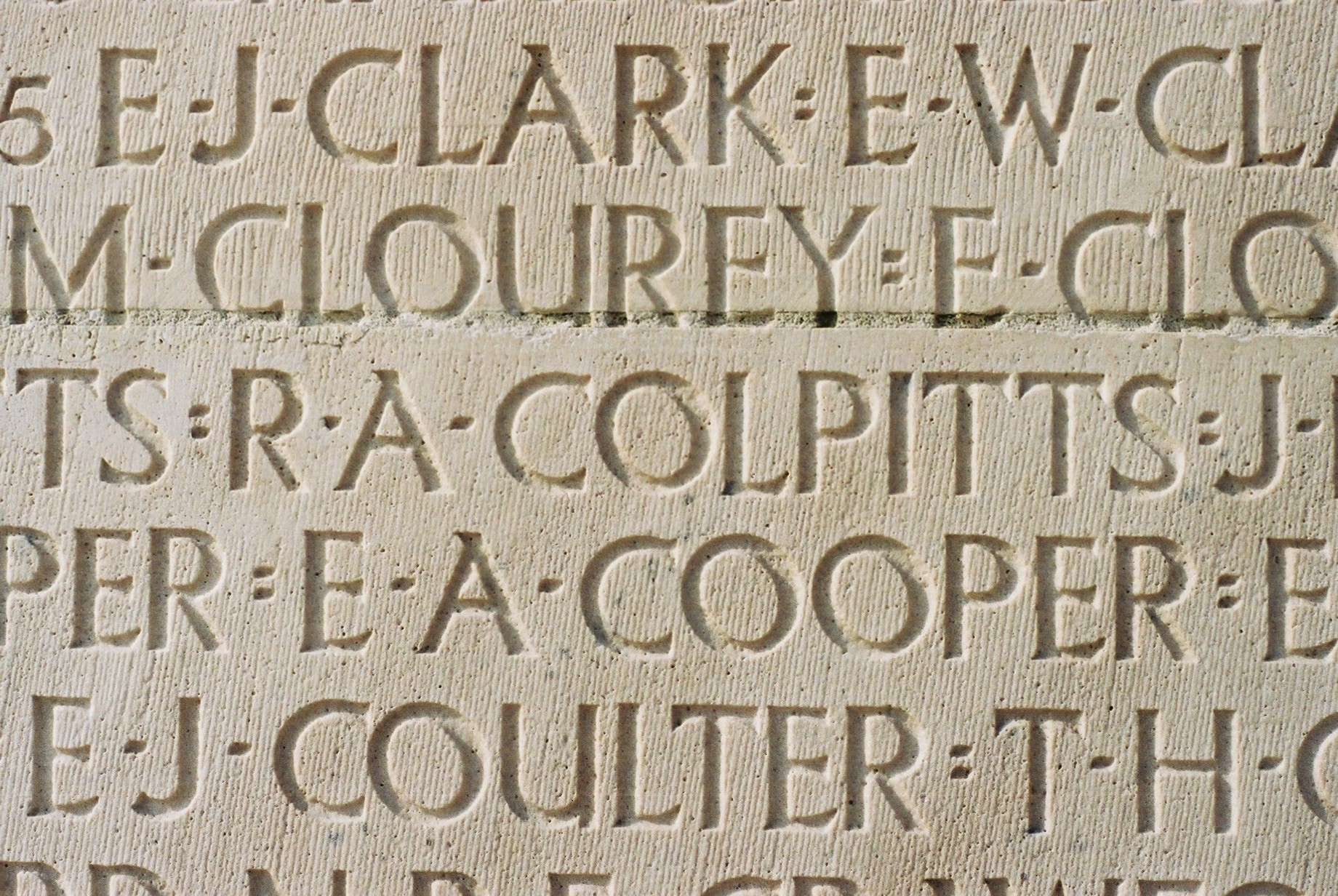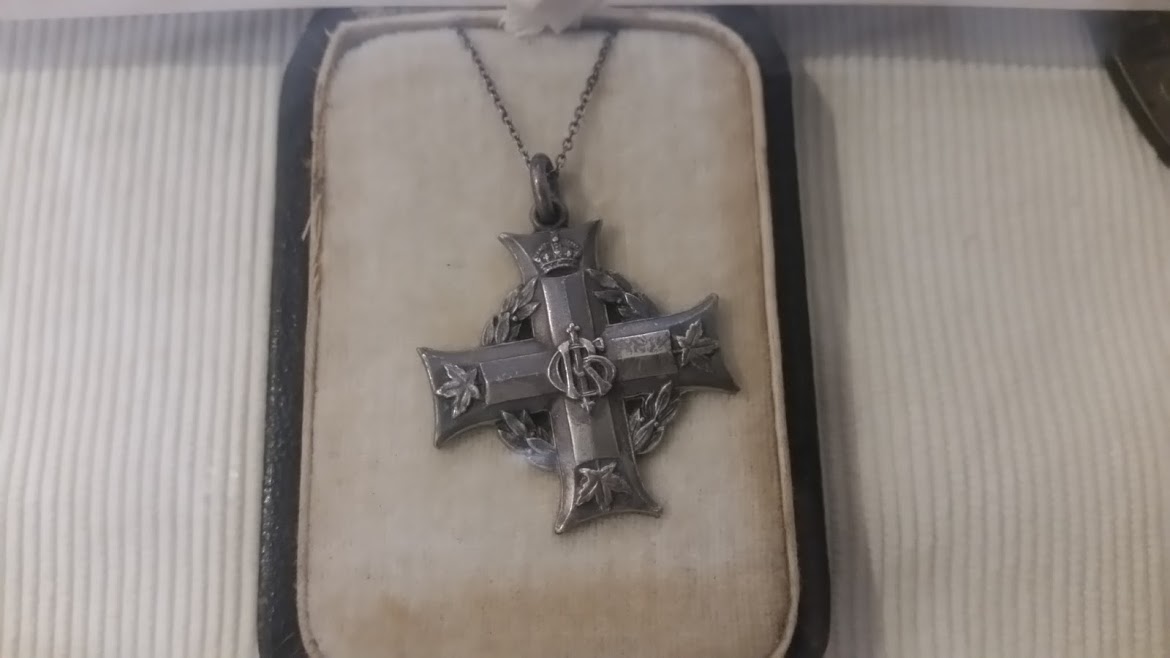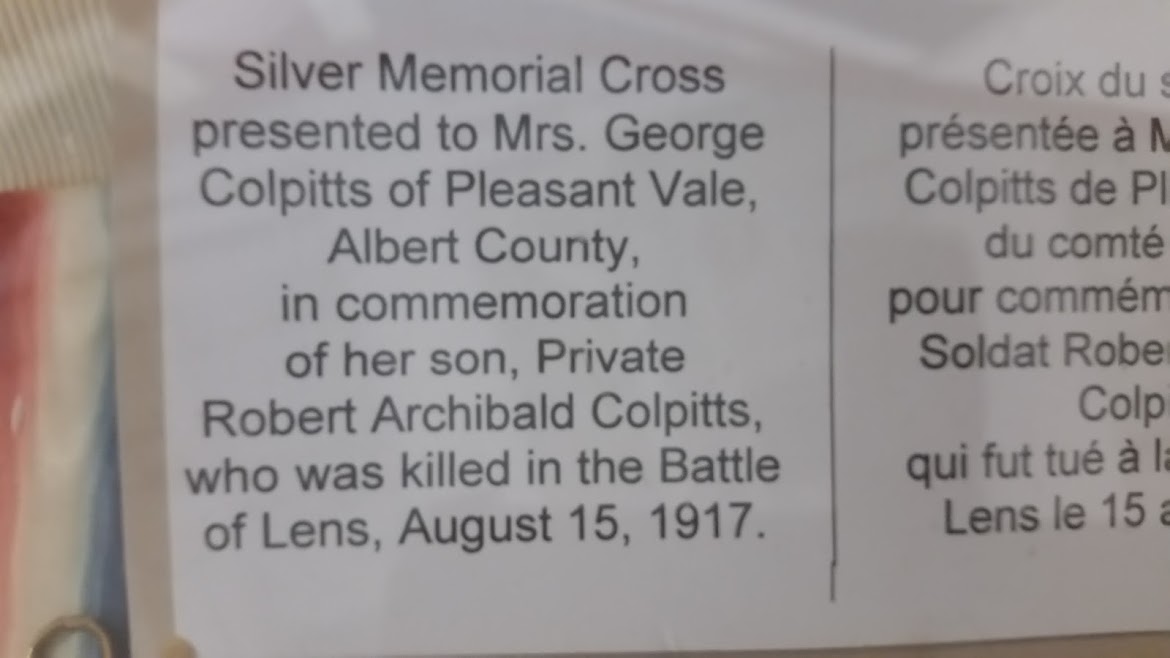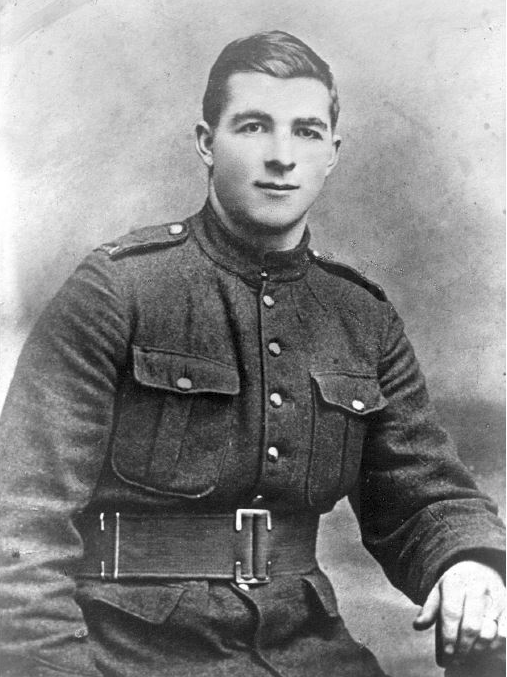Lest We Forget - James Lewis Warnock - Killed in Action 100 Years Ago 09.01.1917
James Lewis Warnock, 817395 was from Hillsborough, Albert County, New Brunswick and was born November 1, 1895. He was the Son of Alfred and Lavenia Warnock, of Surrey, Albert Co., New Brunswick. He enlisted with the 26th Battalion, November 30, 1915. He was listed as Killed in Action at while fighting with the 26th Battalion on September 1, 1917. He is buried at the LONGUENESSE (ST OMER) SOUVENIR CEMETERY ; Pas de Calais, France.
You can find his attestation records by clicking here.
He is Commemorated on Page 345 of the First World War Book of Remembrance.
A virtual memorial can be found here.
His gravesite information can be found here.
If anyone has any further information, photos or memories they would like to share please pass them along.
Workshop Sept 24th ~ Sauerkraut, kimchi & more: learn the traditional art of lacto-fermentation
Sourdough bread, anchovies, chocolate, cheese, Kosher dill pickles and yogurt… what do these all have in common? They are all products of lacto-fermentation.
Lacto-fermentation is a complicated word for a simple process: a way to preserve food by allowing it to ferment.
You can learn the art of lacto-fermentation on Sunday, September 24th from 1:30 to 4:30pm at the Albert County Museum in Hopewell Cape.
To preserve certain foods, such as sourdough or yogurt, a culture is added to the fresh food. The culture (i.e., a bit of yogurt or bread dough) contains microorganisms that transform the raw ingredient into a more stable and nutritious food.
Preserving vegetables is even more simple. Basically, you can preserve vegetables by adding water and salt. No boiling water baths, no pressure cookers…. Just a few simple steps. The result is placed in a cool place and allowed to ferment.
The preserves are more digestible than the original vegetables and the food contains probiotics.
Every culture has a tradition of lacto-fermentation. For example, cabbage is preserved as sauerkraut in Germany and preserved (along with hot peppers and other vegetables) as Kimchi in Korea.
You can learn the art of lacto-fermentation on Sunday, September 24th from 1:30 to 4:30pm at the Albert County Museum in Hopewell Cape.
Ruth Merrett will show participants how to make their own ferments. At the end of the workshop, you will take home not only the skills to preserve food but also at least three jars of preserved vegetables.
Participants will bring vegetables and jars, and return home with new skills and three bottles of preserves. Cost: $15.
Advance registration is required. Contact the museum by dropping by, by calling 734-2003, or email Janet Wallace at garden@albertcountymuseum.com.
This project has been made possible in part by the Government of Canada. Ce projet a été rendu possible en partie par le gouvernement du Canada.
Once you learn the basics, try these recipes
Apple Spice Sauerkraut
Cabbage
Salt
3 apples, grated, per medium sized cabbage
1 tablespoon of grated ginger per cabbage
1 teaspoon cinnamon per cabbage
¼ or less teaspoon ground clove per cabbage
Chop cabbage, massage and add salt.
Add all the other ingredients.
Pack tightly in a jar and cover with a filter or cloth. Taste daily. Refrigerate when you are happy with the taste.
Basic Salsa from Nourishing Traditions by Sally Fallon
4 medium tomatoes, diced
2 small onions, finely chopped
3⁄4 cup chile peppers, hot or mild
6-8 cloves garlic
1 bunch cilantro
1 teaspoon dried oregano
juice of 2 lemons or limes
1 tablespoon of sea salt
1⁄4 cup clean, unchlorinated drinking water (may not be necessary)
Mix, press into jars. Let ferment 1 to 2 days in a warm kitchen and then put in the fridge. Use a glass weight to keep the mass under liquid or pour olive oil on top.
A tisket, a tasket, learn to weave a wicker basket: August 26
Watch this type of basket being made
Basket weavers will be busy on Saturday, August 26th, and the Albert County Museum. Drop by and watch them at work and learn how to weave a wicker basket.
We will use willow branches to make a functional basket - the type that could be used to gather food from the field or the forest.
An Acadian basket weaver and three other weavers (with varying levels of experience) will demonstrate how to make a basket from willow branches. This free demonstration will begin at 10am and finish at 4pm. Feel free to drop in at any point, or several times, to see the process, take pictures and ask questions.
Feel free to visit the museum garden as well and ask the Museum Gardener, Janet Wallace, questions about organic gardening.
Apprenez comment faire un panier en tiges de saule. Venez observer des vanniers. Posez des questions et prenez des photos.
Cette démonstration de Vannerie en Osier est offerte en français et en anglais; this demonstration is offered in French and English.
For more information about the demonstration, museum garden or storytelling project, please contact Janet Wallace at garden@albertcountymuseum.com.
“Growing Together: Seeds from the past; seeds for the future” is funded in part by the Government of Canada. Ce projet est financé en partie par le gouvernement du Canada.
From Branches to Baskets: A basket weaving demonstration, Saturday, August 26th
Basket from willow branches
For thousands of years, wicker baskets have been used to collect food. Foragers have used baskets when gathering berries, seeds and nuts. Farmers have used baskets to carry crops in from the field, as sieves to clean grain, and to move compost and other soil amendments. Fishermen used baskets to hold fish but also to trap fish. Beyond being useful, wicker baskets are also beautiful.
Baskets can be made from many materials. Mi’kmaq often used pounded ash and roots to make baskets. Wicker baskets, however, are made from branches.
Next Saturday, on August 26th, you can learn how to weave a wicker basket. At the Albert County Museum, an Acadian basket weaver and three other weavers (with varying levels of experience) will demonstrate how to make a basket from willow branches. The demonstration will begin at 10am and finish at 4pm. Feel free to drop in at any point, or several times, to see the process, take pictures and ask questions.
Apprenez comment faire un panier en tiges de saule. Venez observer des vanniers. Posez des questions et prenez des photos.
Cette démonstration de Vannerie en Osier est offerte en français et en anglais; this demonstration is offered in French and English.
For more information about the demonstration, museum garden or storytelling project, please contact Janet Wallace at garden@albertcountymuseum.com.
“Growing Together: Seeds from the past; seeds for the future” is funded in part by the Government of Canada. Ce projet est financé en partie par le gouvernement du Canada.
Lest We Forget - Dallas Arthur Crandall - Killed in Action 100 Years Ago 08.13.1917
Dallas Arthur Crandall,832622 was from Gowland Mountain, Elgin, Albert County, New Brunswick and was born October 5, 1893. He was the son of Hiram A. and Susan J. Crandall, of Elgin, Albert Co., New Brunswick. He enlisted with the 145 Battalion on May 3, 1916. He was listed as Killed in Action at while fighting with the 10th Battalion on August 13, 1917. He is buried at the FOSSE No. 10 COMMUNAL CEMETERY EXTENSION ; Pas de Calais, France.
You can find his complete war records by clicking here.
He is Commemorated on Page 222 of the First World War Book of Remembrance.
A virtual memorial can be found here.
His gravesite information can be found here.
If anyone has any further information, photos or memories they would like to share please pass them along.
Lest We Forget - Frank John Coram - Killed in Action 100 Years Ago Today 08.16.1917
Frank John Coram, 709116 was from Middlesex, Albert County, New Brunswick and was born March 6, 1896. He was the son of Mr. Albert Coram and Mrs. Fannie Coram. He enlisted with the 104 Battalion on October 21, 1915. His occupation was listed as labourer. He was listed as Killed in Action while fighting with the 26th New Brunswick Battalion on August 16, 1917 at the Battle of Hill 70. He is commemorated on the Vimy Monument; Pas de Calais, France.
You can find his complete war records by clicking here.
He is Commemorated on Page 220 of the First World War Book of Remembrance.
A virtual memorial can be found here.
If anyone has any further information, photos or memories they would like to share please pass them along.
Lest We Forget - Robert Archibald Colpitts - Killed in Action 100 Years Ago Today 08.15.1917
Robert Archibald Colpitts, 709672 was born in Liverpool, England and was born July 4, 1893. He was the son of George W. and Margaret (Gardiner) Colpitts. He enlisted with the 104 Battalion on November 3, 1915. His occupation at the time of attestation was listed as a farmer. He was listed as Missing in Action and presumed dead during the Battle of Hill 70 while fighting with the 26th New Brunswick Battalion on August 15, 1917. He has no known grave and is commemorated on the Vimy Monument :Pas de Calais, France.
You can find his complete war records by clicking here.
He is Commemorated on Page 218 of the First World War Book of Remembrance.
A virtual memorial can be found here. \
A Memorial Plaque was crafted in his honour with an excellent write up and can be found here.
The museum is also fortunate to have his mother's silver cross medal, which can be viewed at the museum.
If anyone has any further information, photos or memories they would like to share please pass them along.



Make a joyful noise, enjoy National Acadian Day!
Acadian flag
Today, August 15th, is National Acadian Day. One of the ways to celebrate is by Tintamarre -- walk in the streets with the Acadian flag and make a loud noise. Use instruments or bang pots and pans, have fun and celebrate Acadian culture. August 15th was chose as National Acadian Day because it is the Feast Day of Our Lady of the Assumption, the patron saint of the Acadians.
In Albert County, NB, Acadians created the groundwork (literally) for our communities. Acadian settlers converted wetlands and forest into productive farmland – land that was later used by immigrants from Germany, the British Isles and the United States.
In 1698, Pierre Thibodeau and his seven sons, along with Pierre Gaudet, settled in Shepody or Chipoudie (between Hopewell Cape and Riverside-Albert). The men and their descendants cleared land. After cutting down trees, limbs and logs that weren’t used were burned. The ashes were spread on the land and helped to “sweeten” the soil (reduce acidity in the same way that an application of lime does).
In the marshlands, they dug canals, built dykes and made “aboiteaux.” This ingenious system involves a wooden box in the dyke between land and saltwater. The wooden flag moves only one way – it allows fresh water to drain from the crop land but doesn’t allow seawater to contaminate fields.
We don’t know exactly what crops were grown in Shepody, but in 1689 Acadian settlers near Aulac and Beaubassin raised cattle, sheep and hogs and grew rye, flax, barley, hemp, corn and tobacco. Water wheels were used to grind grain into flour. It is likely the farmers in Shepody grew the same or similar crops.
The Acadians were forced off their land by the British in the expulsion of 1755. Signs of their time on the land can be seen across Albert County – in the dykes and drained fields, some still used for farming.
On National Acadian Day, we can take time to honour our past and celebrate Acadian culture. Honk your horn, wave a flag and enjoy a great meal.
This is part of Growing Together – a project which celebrates Canada's 150th year through food, seeds and stories! This has been made possible in part by the Government of Canada.
Summer savory - the herb of Acadie
Summer savory
Summer savory plays a significant role in the food culture of Atlantic Canada. The herb is associated with holiday food and traditional meals. For example, turkey stuffing is often made with summer savory rather than sage (which is common in the rest of Canada).
Summer savory (“sarriette” in French) plays a special role in Acadian food culture. The herb is the main seasoning in fricot (rabbit or chicken stew) in Acadian communities in New Brunswick. It is also a component of the Herbes de Provence mix.
L’Ancienne d’Acadie is a Canadian variety of summer savory with a multicultural history – reflecting the various people who have lived in the region. It may have originally been brought to what is now New Brunswick by French or British settlers. Compared to modern varieties of summer savory, l’Ancienne d’Acadie is a short, stocky plant with a strong flavour.
The variety has been passed down from generation to generation. Jean Prudent Robichaud (1867-1958) received the seed from a woman from the Esgenoôpetitj First Nation at Burnt Church, NB, while he was working on Mi’kmaq farms using his draft horse. Burnt Church was a French settlement and Mi’kmaq community named for the incident in 1758 when the British burned the community’s church as part of the Acadian expulsion. Jean-Prudent’s descendants maintained the variety, which has been incorporated in the Slow Food Canada Ark of Taste.
You can learn how to grow summer savory and enjoy a delicious meal of fricot at the Albert County Museum on Saturday, July 29, 2017. All of this, including a garden tour and a lively discussion of the origins of fricot, costs just $8 with admission to the museum or a membership to the Albert County Historical Society (or $10 for others).
Please reserve tickets at the museum or by calling 734-2003 before July 26. The event starts at 11am and continues to at least 2pm. Cette démonstration est offerte en français et en anglais; this demonstration is offered in French and English.
This is part of Growing Together – a project which celebrates Canada's 150th year through food, seeds and stories! This has been made possible in part by the Government of Canada.
For more information about the lunch, museum garden or storytelling project, please contact Janet Wallace at garden@albertcountymuseum.com or Melody Land at 734-2003.
Lest We Forget - Wylie Freeman Dives - Killed in Action 100 Years Ago Today 07.16.1917
Wylie Freeman Dives, 832636 was from Elgin, Albert County, New Brunswick and was born December 5, 1895. He was the son of Roland Dives, of Meadow Elgin, Albert Co., New Brunswick, Canada.. He enlisted with the 145th Battalion on May 10, 1916. He was listed as Killed in Action at while fighting with the 10th Battalion on July 16, 1917 at Loos, france. He is buried at the Maroc British Cemetery, Nord, France.
You can find his complete war records by clicking here.
He is Commemorated on Page 228 of the First World War Book of Remembrance.
A virtual memorial can be found here.
His gravesite information can be found here.
The 10th Battalion's War Diary for July 16, 1917 can be found here and here.
Please if you have any photos of Wylie send them to us.
If anyone has any further information, photos or memories they would like to share please pass them along.
Lest We Forget - Clyde E Newcomb - Killed in Action 101 Years Ago Today 07.14.1916
Clyde E Newcomb was from Memel, Albert Co., New Brunswick and was born March 5, 1892. He was the son of J. Albert Newcomb and Ella Newcomb, of Shepody, Albert Co., New Brunswick. He enlisted with the 26th Battalion on November 28, 1914. He is buried at RENINGHELST NEW MILITARY CEMETERY.
You can view his complete military records here.
You can find his attestation papers by clicking here.
He is listed on page 141 of Canada's Book of Remembrance.
You can view his internment records here.
If anyone has any further information, photos or memories they would like to share please pass them along.










